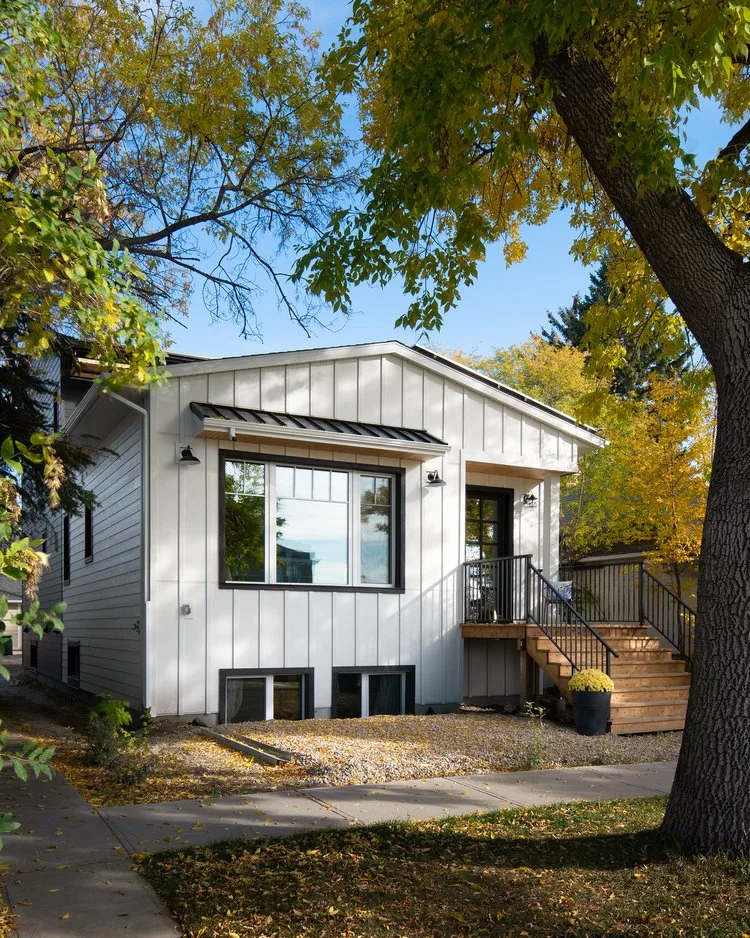Building a net zero home can be an exciting and challenging journey. From choosing the right materials to ensuring your home is energy efficient, every decision you make can have a big impact on the end result.
As homeowners who have successfully built our own net-zero home, we know firsthand how overwhelming it can be to make these decisions. That’s why we want to share the seven best decisions we made. Whether you’re just starting out or already in the midst of your own net-zero project, we hope these decisions will provide you with valuable insights and help you create the energy-efficient home of your dreams.
Tip 1: Find a net zero home Builder
This cannot be understated… seriously! Take the time to vet as many professionals as possible, get referrals from people in the industry, ask experts in every area of home building who they trust and why. Without our incredible, talented and dedicated builders, we wouldn’t be writing this post. And trust us, we had some close calls before we found the right people. At the start of the process we were so excited to get our project going that we took chances on things that sounded and felt too good to be true. Luckily for us, our gut told us to slow down when things weren’t aligning and we asked other professionals for their insights.
Eventually we met Axel and Heather, the incredible husband/wife duo behind Homes by Sorensen. They are a young and energetic team that is so passionate about energy efficient housing and they have positioned themselves as the leaders in our city for building high performance custom homes. You want someone you can trust, someone who will be excited for you, someone knowledgeable in energy efficiency, and someone who isn’t gouging you on price. Just think, you are going to need them to answer questions like “what do you think is a better bang for buck overall, solar or more wall insulation?”
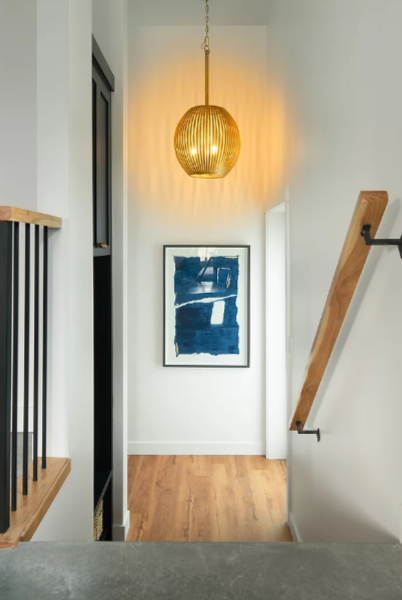
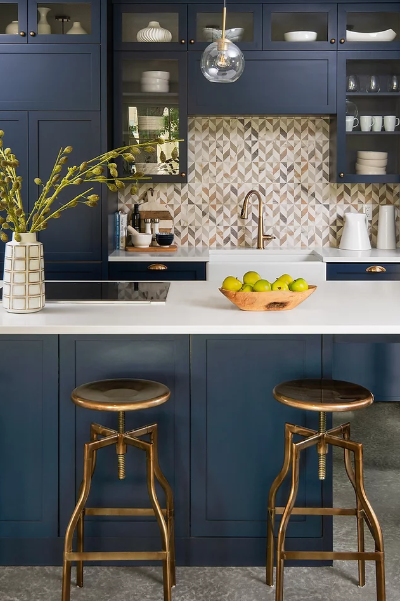
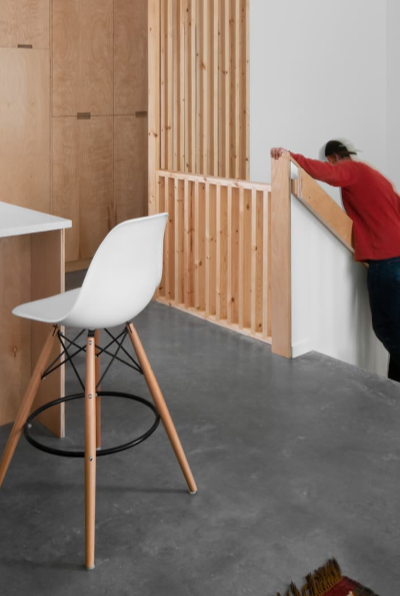
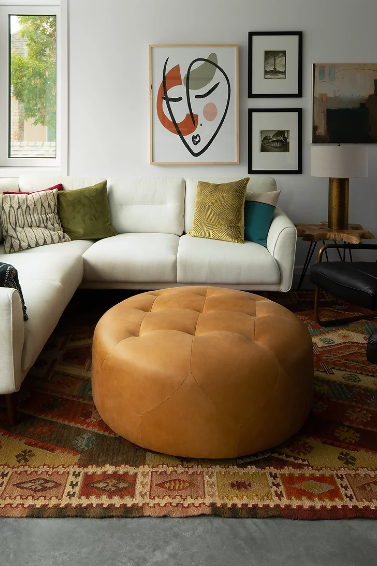
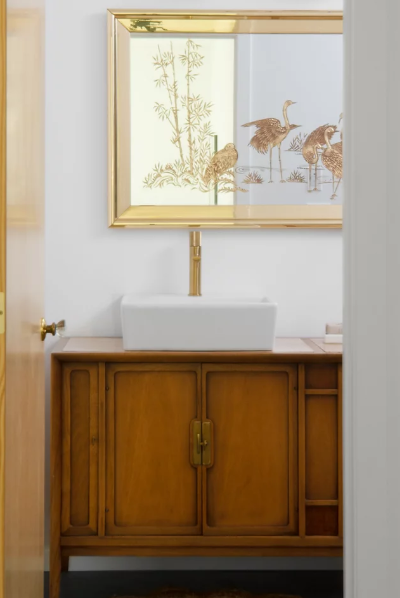
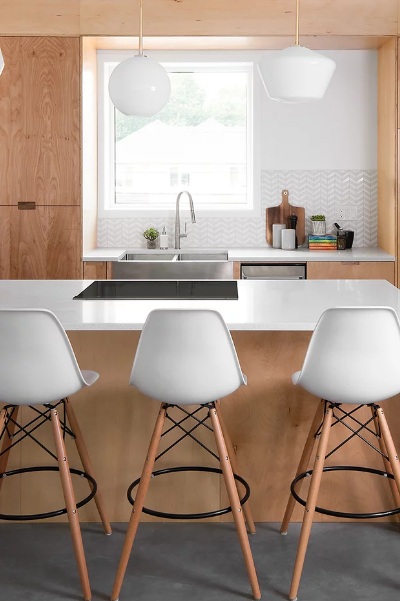
Tip 2: Energy Monitoring Devices
People often ask us what they could do in their existing homes to make them more environmentally and economically friendly. Energy monitors are always one of the first things I suggest as the upfront investment is relatively small and they pay themselves back in electricity bills over time. Monitoring your energy usage through home monitoring systems can help you understand which of those pesky energy sucking appliances are costing you the most.
There are a few options for energy monitors but we chose the Sense Home Energy Monitor and really love it. It’s soooo easy to install, gets hidden in your electrical panel, and sends data to your phone in real-time… so you can run around your house like a mad person turning things on and off. Data is displayed in an easy-to-understand interface and the program’s AI system learns the energy signature of your major appliances over time. There is also a feature that shows you how your energy usage compares to similar homes that are using the app which gives you a bit of a competitive push to be more energy efficient. If you have solar on your home, the monitor will show you your daily, weekly, monthly and yearly solar production compared to your energy usage which is great for rubbing your net-zeroness in any skeptics faces. Plus it’s smart home compatible.


A more budget friendly option is the Emporia Energy Smart Home Energy Monitor. This energy monitor has a lot of the same bells and whistles as the Sense Home Energy Monitor, but does not have the same degree of smart-home compatibility and does not have the benefits of artificial intelligence. That being said, the Emporia Energy Smart Home Energy Monitor does have extra leads that can individually be attached to each appliance circuit.

Tip 3: Buy Used
Once you have secured the perfect team, don’t be afraid to tell them what you want. If they truly want your project to succeed, they will support and even celebrate your crazy ideas (Thanks Heather!). One thing that was a top priority for Glenn and I was to reduce our construction impacts and our costs by selecting finishing’s that were repurposed or thrifted.
For instance, we purchased all our light fixtures from Habitat for Humanity’s ReStore, our bathrooms vanities are old credenzas that we converted into sinks, and a lot of the faucets, sinks and tiles came from thrift stores or auctions. This saved us around $4,000 and gave us a really unique feel to the house. One word of caution, you do have to be careful with things like faucets and electrical as far as the warranty is concerned.
So our house didn’t end up looking like a hodgepodge garage sale on the inside, we picked a design style that fit our thrifted pieces seamlessly. We decided on a low key Scandinavian feel, we then threw in pops of colour by incorporating thrifted and funky furniture.
Overall, not only did we save money and reduce our overall environmental impacts, but we also really cherish and celebrate all the funky furniture and finishings that make up our spaces. It really feels like our house has a story.



Tip 4: Prioritize
Know what you want and stick to it. Write out your priorities on the first day of planning and go back to these when you have tough decisions to make. Our three main objectives (in order) were: #1 affordability, #2 privacy, and #3 net-zero. We were able to achieve all three pretty evenly because we made them the pillars of the project and we checked back in at every phase to ensure we were still on track.
Setting out your priorities from the get-go will help you keep your eyes on the prize and not lose sight of what is important to you, especially when you have to make the tough decision between Italian marble countertops or long term energy security.
The other component that saved us money and reduced our impacts was by keeping it simple. We opted not to have high-end finishings because we felt like a high-end aesthetic could be achieved by being intentional. We found complexity often led to loss of square footage, money and weirdly… efficiency. Hot tip, corners on the outside of your house are the worst areas for keeping heat out or keeping heat in. Prioritize simplicity!
Tip 5: Sun is Free… Use it
When people think of solar energy, they usually think of solar panels. Solar power is an integral part of reaching net zero. We have a 15 kW hour system on our home and after the first winter in our home, our house started to produce more energy then it was using. That means we no longer pay energy bills and even get a $1,200 cheque at the end of each year. At that rate, our solar panels will have paid themselves off within 6 years.
But the benefits of solar panels depend on quite a few factors. Things like roof pitch and the orientation of your home, local energy policies, natural shadows, existing cleanliness of your grid, and where you are in the world. Long story short, solar might not be right for everyone, but it’s definitely worth looking into. My number one recommendation, if you are building a house that will have solar panels, design as much of the roof as you can to face either directly south or directly north (depending on your hemisphere).
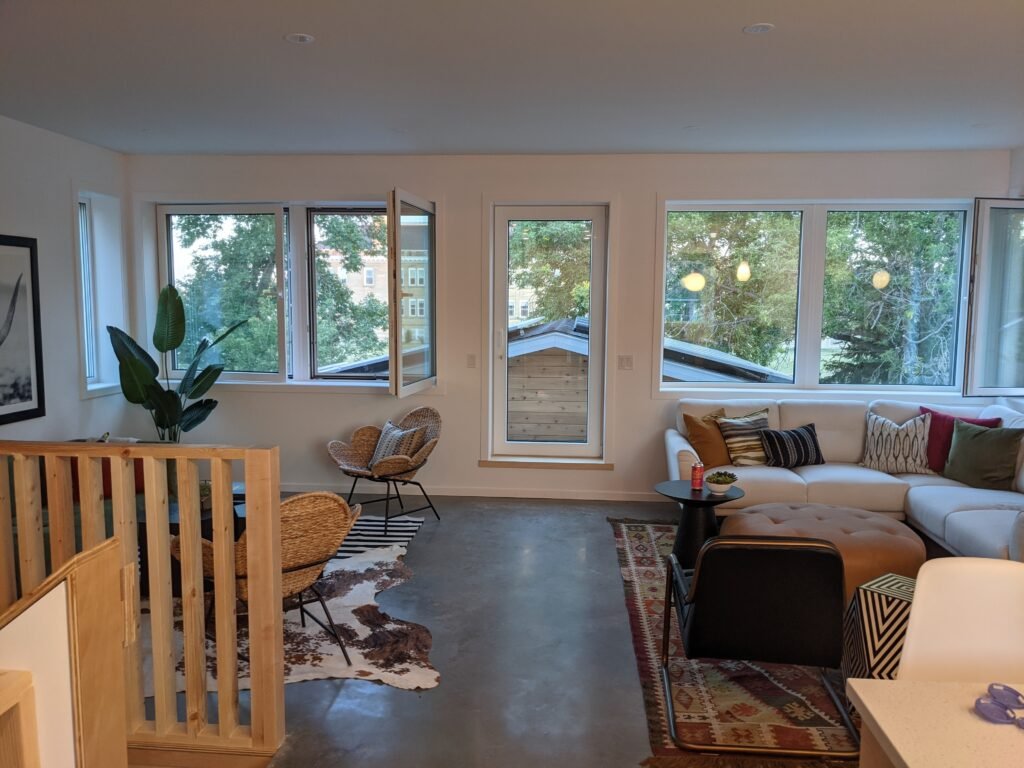
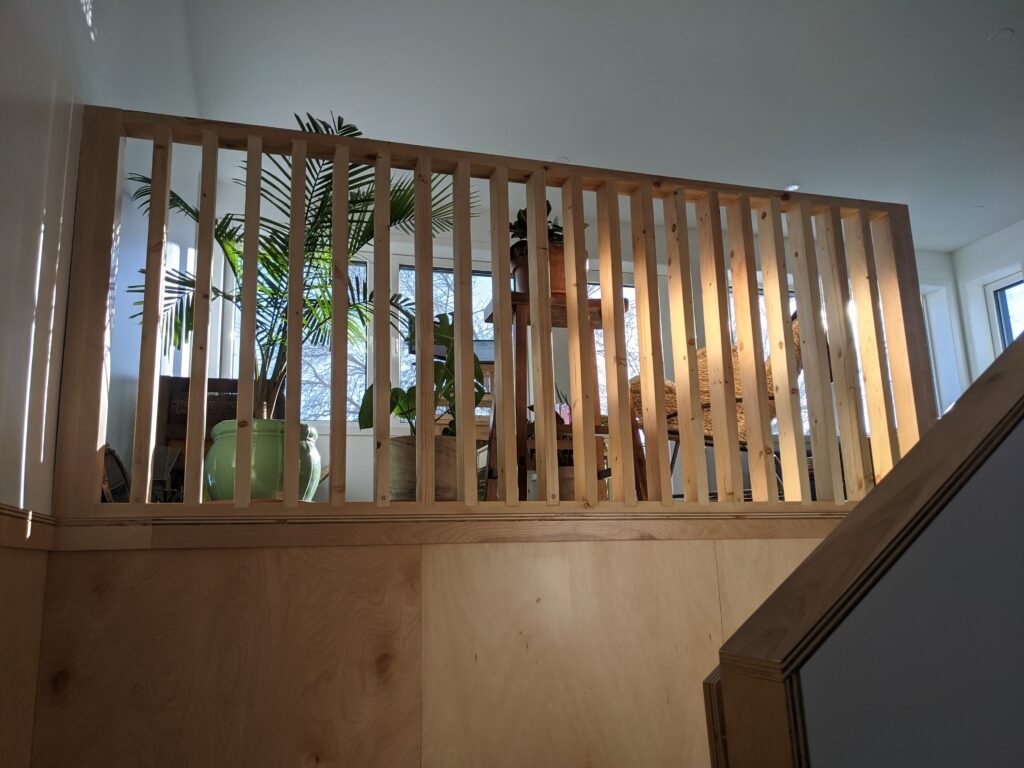
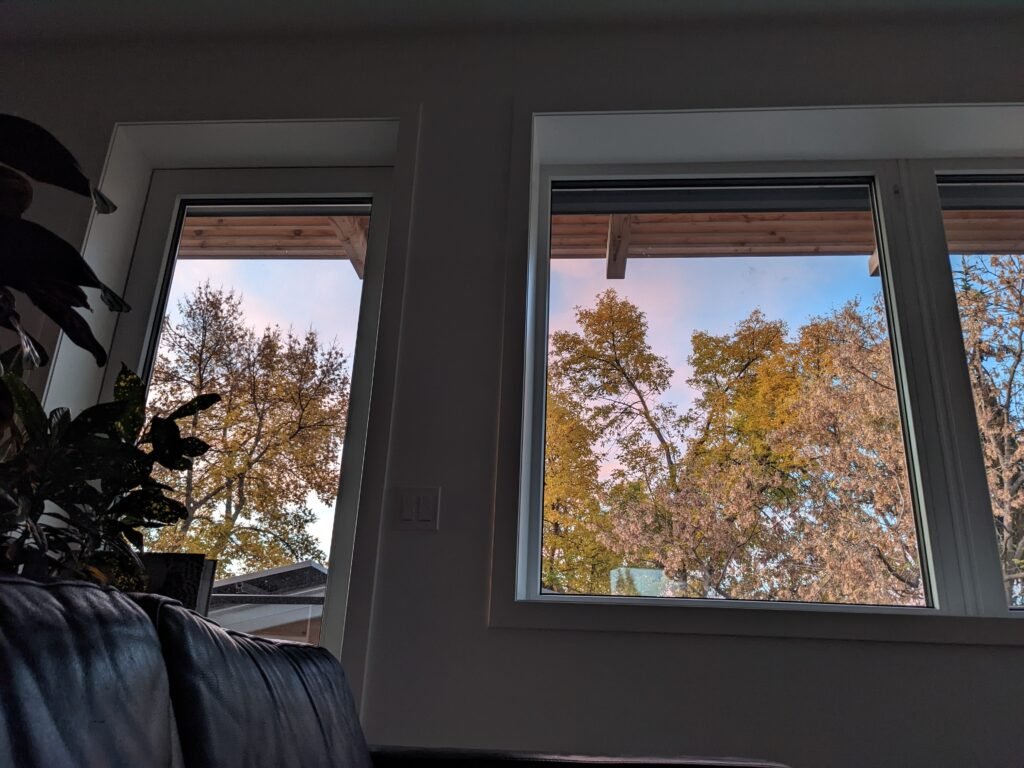
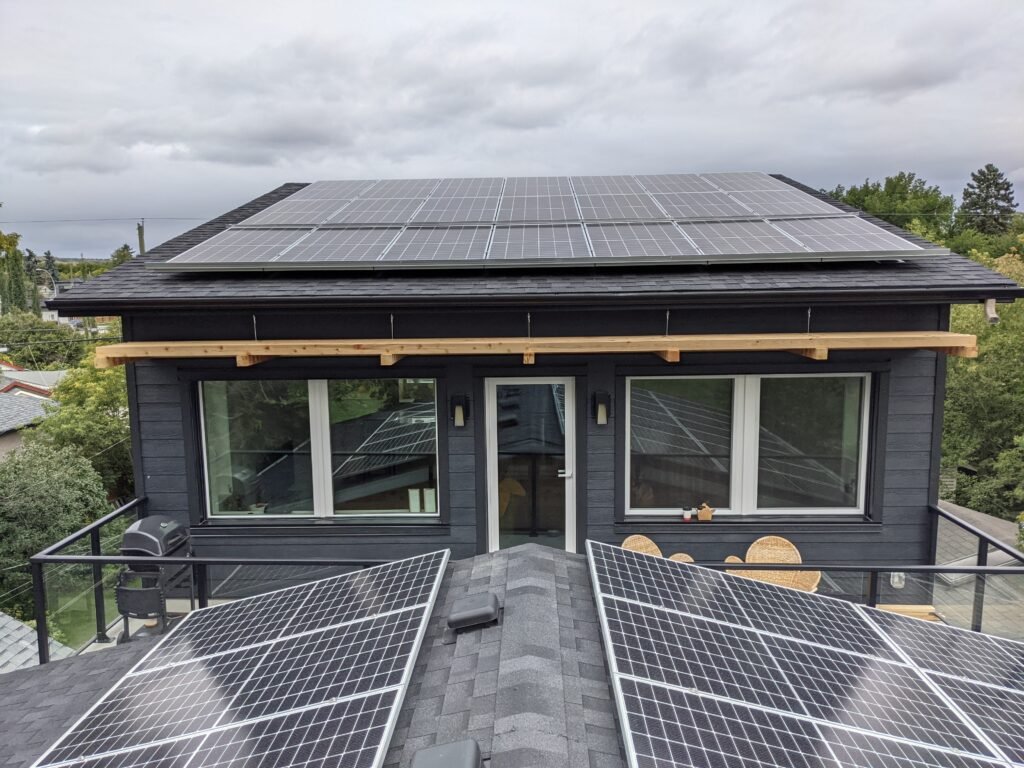
Solar panels aren’t the only way to take advantage of the sun though! We designed our house to capture free heat from the sun using something called passive house design. Passive house can be a little complicated when you get in the thick of it, but here’s the best things to know and research. #1 face most of your windows towards or away from the sun depending on whether you want heating or cooling; #2 build the right awnings for shading in the summer; #3 insulate your house to a high level, usually higher than the standard building code; #4 make your house more airtight- you want as little air going in and out as possible; and #5 avoid thermal bridging.
Little caveat, passive house certification is a rigorous process with specific standards for building and performance. It requires certification by a certified passive house consultant and that can be pretty expensive. But the principles above can be used on any house for free and you can skip the certification all together. In our minds, the only reason to get certified is for resale value.
Tip 6: You are What you Breath
You know that new car smell? That new home smell? That smell that lingers and sometimes makes your eyes and throat itch? Well that’s the result of something called off-gassing. Off-gassing is the release of chemicals or gases into the air from materials, products, or substances, especially when they are new or recently manufactured. These chemicals are known as volatile organic compounds (VOCs) and are present in many building materials including paints, glues and cleaning supplies. However, if you are building a net zero home, they could be worse for you because of how air tight your home is.
Long term and persistent exposure to VOC’s are known to have adverse impacts on peoples cardiovascular health, so if you have asthma or any breathing issues, VOC’s are especially bad for you. Long-term exposure can also increase risks for cancer and can cause damage to your nervous system. But there are things you can do to help prevent the impacts of exposure to VOCs. Your lungs will thank you!
First off, buy VOC free paint, and make sure that it is truly VOC free and not just VOC compliant. VOC free paint is available at most big name paint stores like Benjamin Moore. Second, use the right woods. Untreated solid woods or alternative plywood’s usually have way less harmful chemicals. We went with PureBond plywood by Columbia Forests for our cabinets, stairs and wall panels because they use soy-based glues in their products (way cooler than using formaldehyde, right?).
The other thing you may need in your super airtight energy efficient home is some type of mechanical system to help it breathe. HRVs (Heat Recovery Ventilator) or ERVs (Energy Recovery Ventilator) will do just that, both systems cycle air in and out of your home to ensure that the air stays fresh while controlling how much heat is lost to the air. What makes an HRV or ERV different you may ask? Mainly cost and humidity.
Monitoring Air Quality:
Now whether you’ve built a brand new super efficient home, or you just wanna know what the air quality is in your existing home, an air quality monitor is a valuable tool that can provide you with real-time insights into the air quality of your living space.
Our fav… the Airthings 4200 House Kit. It’s easy to hookup, has a great interface on your phone and works with smart-home technology. It measures radon, total VOCs, pollen and mold risk and connects to your local weather network to make sure data is accurate. At around $350, we found it to be a justifiable cost for our health.

However, if you are looking for something a bit more budget friendly the Airthings 292 Wave Mini Indoor Air Quality Monitor is also a great pick. At only $100 it does almost all the same things as the Airthings 4200 House Kit, but without wifi connection, radon, and mold detection.

Tip 7: Stop Listening to Everyone Else… Build for You!
Stop listening to everyone else’s opinions! People will have a lot of advice for you when you tell them you want to build an energy efficient home. We live in a cold climate in Canada, so when people found out we wouldn’t have a natural gas hook-up and that our home would be completely electric, they didn’t think it was possible. Also, everyone thinks they are an expert on the environment these days, but turns out most of them got their education from Facebook. Jokes aside, we really struggled with the doubt and criticism we got from our friends and family as we pursued this project.
But for us, we knew that we needed to do something for the environment and this was the place where we could have the biggest impact. So no matter what people say about your dream of building an energy-efficient home, remember to always stay true to your beliefs and don’t let the naysayers kill your stoke! We can’t wait to see what you build!

Related Stories
Click here to explore more about our net-zero house Project Leo.
